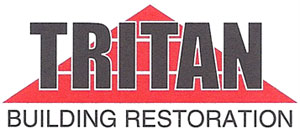10:30 am - 11:50 am | Room: Pretium Room | Session Chair: Andrea Mucciarone
This study aims to generate hygrothermal data and improve the design of wood-frame walls meeting the R22 effective requirement for buildings up to six storeys in the City of Vancouver. Twelve wall panels in six types of assemblies, three orientations are tested, using a test hut at FPInnovations’ Vancouver laboratory. These six types of walls consist of different insulation strategies and materials. Walls No. 1 and No. 2 represent deep cavity walls, insulated in their stud cavities with glass fibre batt and open-cell spray foam, respectively. Walls No. 3 – No. 6 are split-insulated assemblies, using exterior insulation of rigid stone wool, extruded polystyrene, foil faced-polyisocyanurate, and expanded polystyrene, respectively, together with glass fibre cavity insulation. The walls also vary in their interior vapour control layer; walls No. 1, 3, and 4 use sheet polyethylene but walls No. 2 and 5 have a vapour retarding paint. The test hut is maintained around 50% relative humidity at 20°C. Water injection is conducted to further stress the walls to investigate their moisture-related behaviour. Data collected over 19 months’ period from October 2018 to May 2020 is presented in this paper. Conclusions from the test includes: • The split-insulated walls have warmer OSB sheathing and it is much less likely for the sheathing temperature to fall below the dew point of the indoor air, compared to the deep cavity walls. The exterior insulation’s vapour permeance greatly affects the wall’s drying performance; vapour-permeable exterior insulation allows drying towards the exterior. • The interior vapour control remains important for Vancouver’s mild climate. Polyethylene appears effective in minimizing outward vapour diffusion and the related wetting. The interior vapour-retarding paint coupled with the wall’s drying capacity (No. 2, No. 5) does not provide sufficient protection from wetting caused by outward migration of indoor humidity under the test conditions. • No OSB sheathing shows visible mould growth resulting from outbound vapour diffusion, although the mould prediction based on the Mould Index following the standard ASHRAE 160 (assuming the OSB sheathing falls into the “Very Sensitive” class) suggests that walls No. 2 and No. 5 in the north orientation should have shown mould growth by the end of the test. Wall No. 5 in both north and south orientations does show mould growth on the exterior surface of its OSB sheathing in and around the wetting pad, suggesting poor drying after water injection.
 Neal Holcroft, FP Innovations
Neal Holcroft, FP InnovationsDr. Neal Holcroft is a Scientist at FPInnovations specializing in the hygrothermal performance of wood-based building envelope systems. He is currently involved in research in the areas of monitoring of mass timber buildings to assess durability and energy performance, hygrothermal model validation of wood-based assemblies, airtightness of prefabricated buildings and design to promote the circular economy. Neal has a PhD in Building Science from the University of Bath in the UK and has been living in Canada for the last 5 years.
Diamond Sponsor

Emerald Sponsor

Emerald Sponsor

Emerald Sponsor

Emerald Sponsor

Emerald Sponsor

Gold Sponsor

Associate Sponsor

Silver Sponsor

Silver Sponsor

Silver Sponsor

Silver Sponsor

Bronze Sponsor

Bronze Sponsor

Bronze Sponsor

Bronze Sponsor

Bronze Sponsor

Bronze Sponsor

Bronze Sponsor

Bronze Sponsor

Bronze Sponsor

Bronze Sponsor

Bronze Sponsor

Bronze Sponsor

Bronze Sponsor
